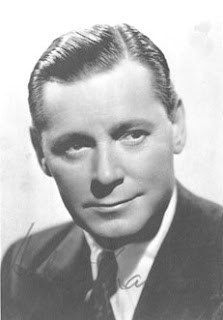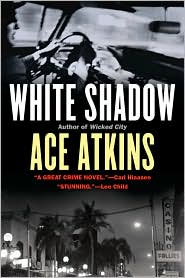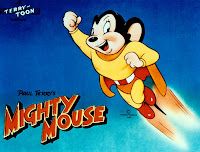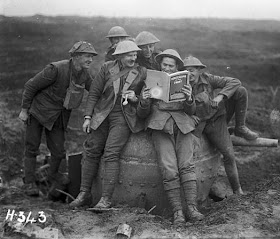Marshall Browne is an
Australian writer you've probably seen me talk about before. I consider it one of my callings to spread the word about his work whenever I get the chance. He's just much too good to be overlooked. Browne, a former merchant banker, writes two terrific suspense series: the Inspector Anders books set in modern day Italy and the
Franz Schmidt books set in Germany on the eve of WWII.
Forced to choose, I'd pick the Schmidt books as my favorites, but the enigmatic Inspector Anders is not far behind.
THE IRON HEART is the second book in the Schmidt series, published in 2009 and not, currently, readily available in this country for reasons that mystify. I was thrilled when I finally got my hands on a copy - thankfully sent directly to me from Australia, by the very accommodating author. I'm happy to say that the book more than meets my expectations. It is even better than I dared imagine. (Not always the case with second books in a series.)
The first book in the continuing Schmidt saga,
THE EYE OF THE ABYSS was/is one of my favorite books and now I must add this second adventure in which Schmidt once again risks life, limb and everything else he holds dear, to work undercover against the insidious Nazi regime. This is as good a book as the first one and simply put, I was completely caught up in the story - kept reading till 3 in the morning one night, same thing the second and third nights.
What a terrific book!
The gist of the story: Franz Schmidt is a bank auditor who has helped mysterious anti-Nazi forces (apparently controlled by the powerful
General Manfred Von Streck, a member of the Nazi inner circle) in the past. Schmidt's ingenious machinations in the first book resulted in several Nazis killed - framed for embezzlement at
Bankhaus Wertheim, the bank Schmidt once worked for. This time around,
General von Streck places the clever auditor inside the ultimately more important
Reichsbank,
'the financial heart of the Third Reich' in Berlin. It is the freezing winter of 1939.
"You're a man with extremely unusual and useful qualities, a Machiavellian mind. A man upon whom good luck smiles," Von Streck had announced to him in November. It was true, though he'd only become aware of it in those last vexed and dangerous months at Wertheims.
Not only is he to keep his eyes open (well one eye for sure, the other is a
prosthesis), Schmidt is to photograph a certain Nazi financial blueprint kept at night in the bank president's safe, then pass the photos on to Von Streck. Schmidt has also to maneuver - daily - through a dangerous phalanx of suspicious Nazi party members and workers who bristle at the idea of his being brought in from the outside to take over as Chief Auditor. These include the zealous
amazonian bank manager,
Fraulein Freda Brandt, a passionate, resentful woman
and her lover and deadly cohort,
Sturmbannfeuhrer Sack of the Gestapo. It isn't long before both begin to suspect the Chief Auditor is up to something.
Schmidt also has to tread lightly around the lascivious bank President,
Dr. Funk. Funk, an ugly little man with pretensions of grandeur, is a known homosexual. He is intrigued by the handsome Chief Auditor and plots an unseemly romance. Schmidt is repulsed by Funk's drunken debauchery but forced to put up with him if he [Schmidt] has any hope of undermining the Reich's financial plans.
Also working at the bank is the beautiful and aristocratic
Fraulein Anna von Schnelling. The young woman (who has caught the divorced Schmidt's eye) is placed in grave danger when she forcefully foils the plans of
Herr Rossbach, a vile oaf of a manager (and future boss of her department) intent on rape.
When she has no choice but to turn to Schmidt for help, he is drawn deeper into a secondary plot which can only endanger his primary goal. Deadly undercurrents swirl around him as Schmidt, despite the many distractions, continues to carry out his assignment. The grimly impatient Von Streck may be working against the Fuehrer's plans, but he is not someone to trifle with.
In another and ultimately very moving storyline, we meet
Fraulein von Schnelling's friend, the intellectual (and rather politically naive)
Elizabeth von Bose who has been holding literary salons in her Berlin home, inviting society women and others to speak freely against the government. She is sure that the authorities would not act against them, at least without due process. A tragically wrong assumption on the part of von Bose and her well-meaning friends once they are infiltrated and betrayed by a young Swiss doctor.
Perhaps the most heart rending parts of the book are the scenes at Gestapo headquarters once von Bose and a woman friend are picked up by the authorities. The women are helpless against the kind of animal brutality they have never imagined existed.
This brought home to me once again, one of the possible explanations why citizens of 1930's Berlin and elsewhere in Germany did nothing while the Nazi juggernaut marched forward. It's possible there were many people who simply did not believe that humans - Germans themselves - were capable of such depravity on an organized scale. By the time they were forced to believe it,
it was too late.
As the factions at work in a futile attempt to help von Bose and her friend combine and overlap with Schmidt's plans, murder and deadly intrigue become commonplace. Ultimately, in one of several hold-your-breath moments in the story, a daring escape to Switzerland (a neutral country during the war) is activated and succeeds because of an ominous and unexpected presence.
Marshall Browne expertly weaves layer upon layer and all I can say is, this is now
officially one of my favorite series of all time. (I can only hope there will be a third book.) It's not just Schmidt who intrigues, there are other secondary characters all beautifully realized:
Frau Singer, the elderly Jewish woman who lives across the hall from Anna,
Abwehr Captain Eugene Von Beckendorf, in love with Anna, but dying of tuberculosis, he will make the ultimate sacrifice to help her and Schmidt,
ex-Judge Rubinstein, a Jewish man surviving in the shadows, supplying false papers, working just a step ahead of the Gestapo. All these characters live in this incredible book.
Browne writes with aplomb and the gift of a sure story-teller. He understands the deep conflict of his main character only too well.
Herr Schmidt is a reserved, even brilliant man - once just a staid banker - trying to stay alive, caught on the slippery slope of equivocation as his duties force him more and more into murderous conspiracy.
(There is a further ominous note in the story, the revelation that Schmidt's ex-wife (he divorced her for her own protection) and his little girl are living in Dresden. This is one of the most heavily bombed German cities during the war - over a hundred thousand people were killed.)





















































